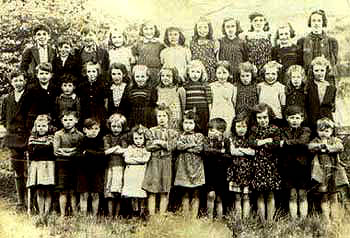|
|
|
|
|
|
|
|
| It was a Friday morning, September 29th, 1950. I was on my bicycle to Drim National School to start my teaching career there. In those years, there weren’t many cars on the roads, so my thoughts were full of anxious anticipation about the day’s work ahead. Then the stillness was broken by the sound of the mill grinding corn as I passed by Riordans’ shop. A group of men chatted as they waited for their bags of meal which would be carried home in the horse-and-cart. A few house-wives were busily arranging their baskets of week-end shopping on their bicycle carriers. |
 Drim N.S. 1950 -'51
Drim N.S. 1950 -'51
|
 Drim N.S. 1967 |
From September 1951, my new principal was John Manning from Loughrea. John, God rest him, was extremely helpful to me. He gave me further guidance on the layout of the school syllabus and always had words of encouragement. As a lover of nature, he tenderly cared for his flower plots and shrubs in the school ground. As I came into school each morning, the senior boys were busy attending to flowers and sweeping leaves as John supervised and smoked his familiar pipe. I can still smell the aroma of the tobacco and hear the ‘gobble gobble’ of Mrs Gardiner’s turkeys across the road in the stubble ground. |
|
We went to school in our bare feet, With nothing much to eat, On the way to Drim School, This we found really ‘cool’. The worst memory I had, Was the day I was bad, The Master was cold, Because I was bold. Instead of a clout, A duster he gave to hold in my mouth, And he made me stay, ‘Til the end of the day! By Catherine Callnan |
Off to school we’d go each day, Thinking of things on the way We’d talk and laugh and have some fun, Sometimes we were late and then we’d run, Nine thirty came we’d settled down, No more acting the class clown, The day was long - we did not care, The people we met are still here, In our village it’s small but good, It is all about our ‘neighbourhood’. By Ann Gardiner |